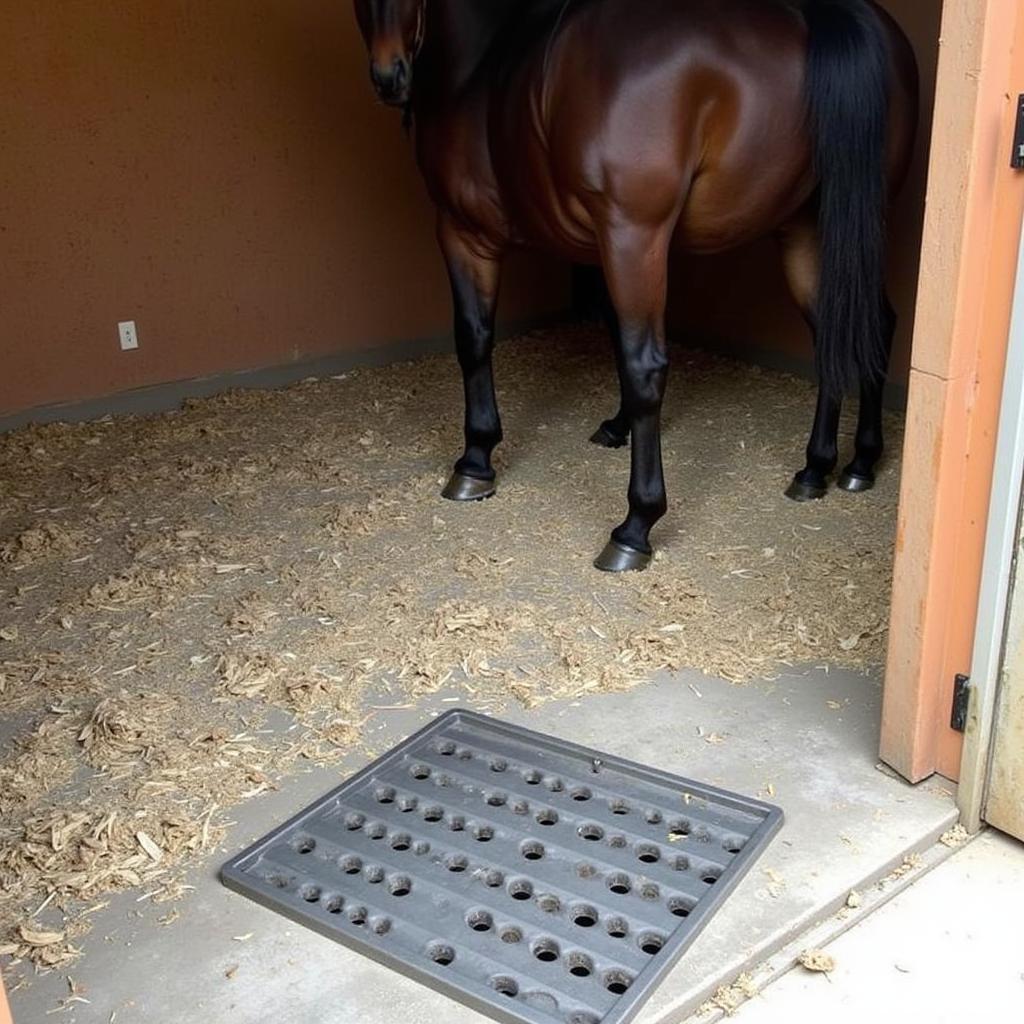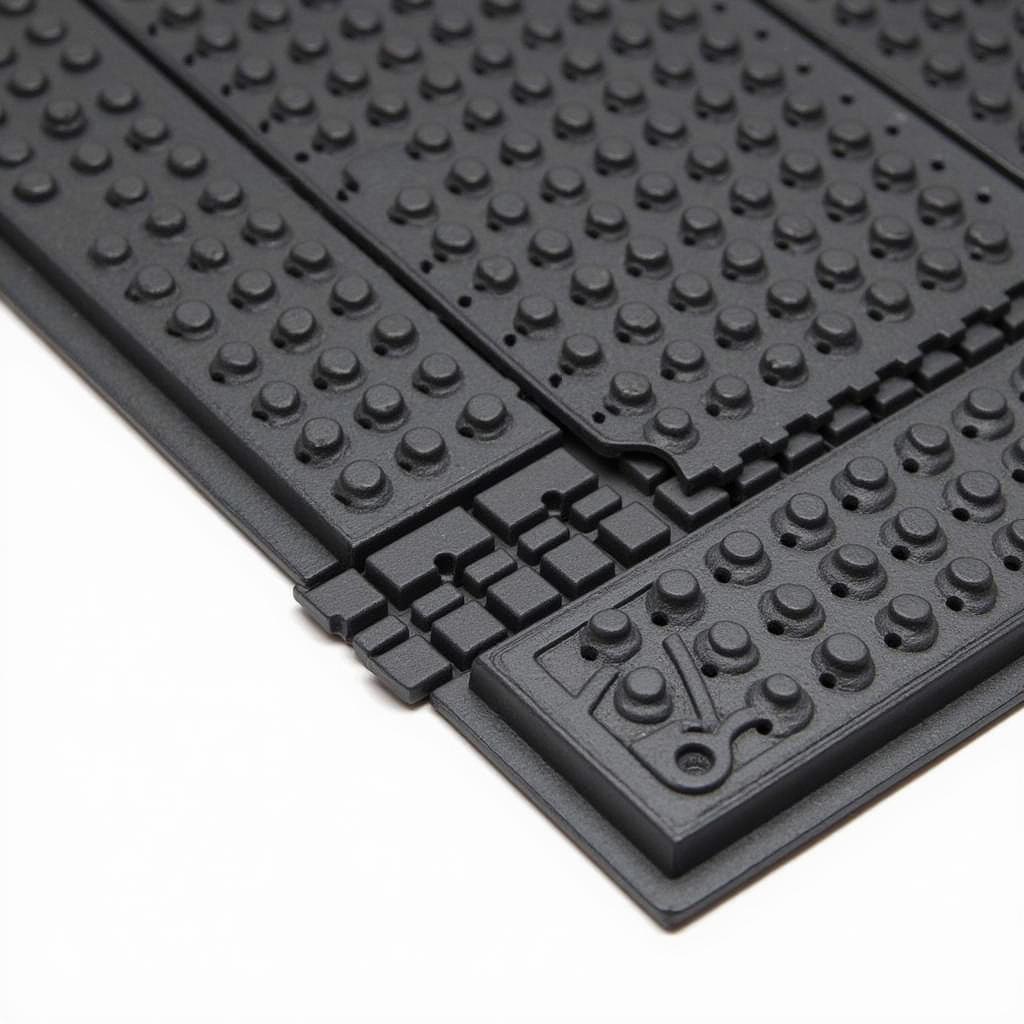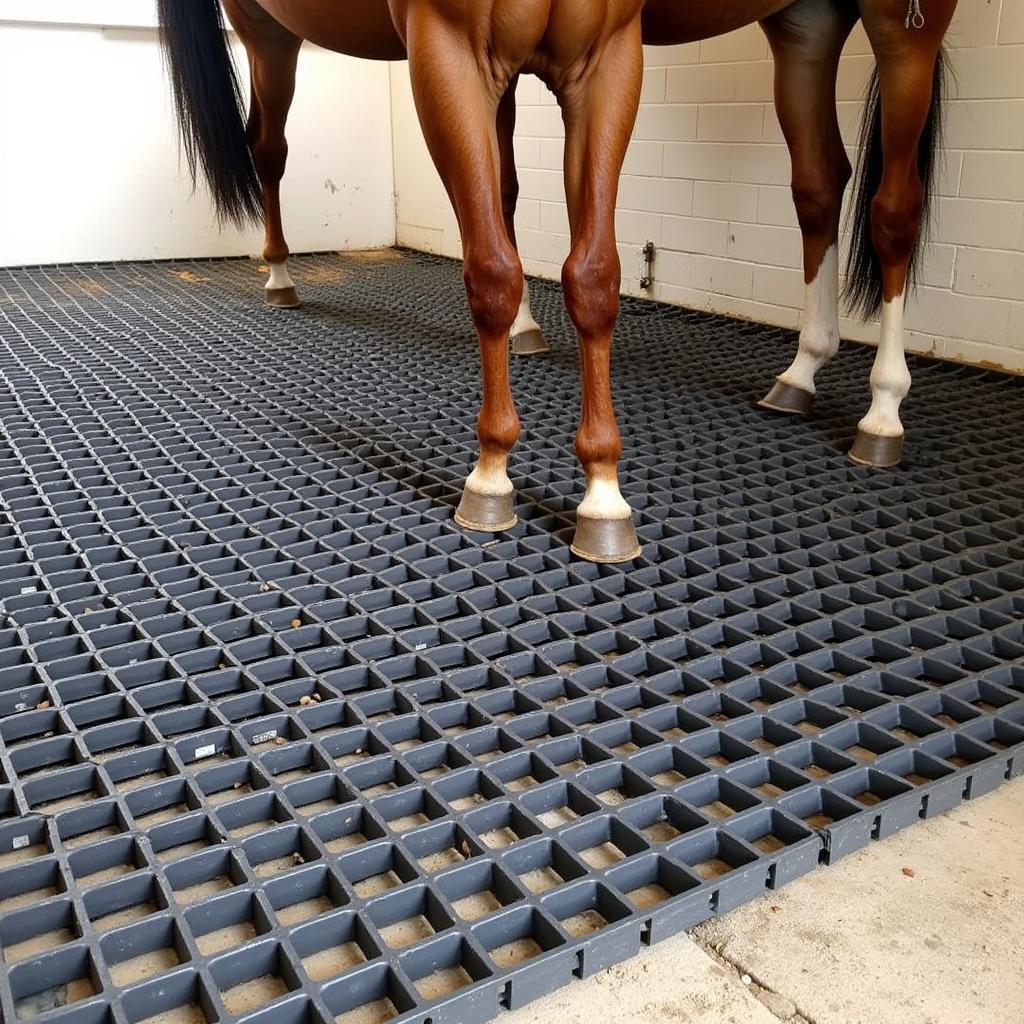Ensuring proper drainage in horse stall flooring is crucial for the health and well-being of your equine companion. Standing water and excess moisture can lead to a host of problems, including hoof issues, respiratory infections, and an unsanitary environment. This comprehensive guide will delve into the importance of Drainage Horse Stall Flooring and explore the various options available to help you create a dry and healthy space for your horse.
Why is Drainage Horse Stall Flooring so Important?
Horses spend a significant amount of time in their stalls, making it essential to provide them with a clean, dry, and comfortable environment. Poor drainage can result in a damp and unsanitary stall, creating a breeding ground for bacteria, fungi, and parasites. This can lead to various health issues for your horse, such as:
- Hoof problems: Constant exposure to moisture can weaken hooves, making them more susceptible to thrush, abscesses, and other hoof-related problems.
- Respiratory issues: Ammonia fumes, often present in stalls with poor drainage, can irritate your horse’s respiratory system and exacerbate existing conditions like COPD.
- Increased risk of injuries: Slippery floors caused by poor drainage increase the risk of slips and falls, potentially leading to injuries.
Types of Drainage Horse Stall Flooring
Selecting the right drainage horse stall flooring is crucial for ensuring a dry and healthy environment for your horse. Here are some popular options:
1. Sloped Concrete Flooring
Sloped concrete is a traditional option for horse stall flooring. The slight slope allows urine and water to drain towards a designated drain, keeping the stall drier.
Pros:
- Durable and long-lasting
- Relatively easy to clean
Cons:
- Installation can be labor-intensive and costly
- Can be hard on horses’ joints, especially without proper bedding
 Horse stall with sloped concrete flooring
Horse stall with sloped concrete flooring
2. Rubber Stall Mats with Drainage Channels
Rubber stall mats with built-in drainage channels offer a comfortable and hygienic flooring option. These mats elevate the stall floor, allowing urine to drain away from the surface.
Pros:
- Provide excellent cushioning and support for horses’ joints
- Easy to install and clean
- Improve drainage and reduce moisture buildup
Cons:
- Can be more expensive than traditional concrete flooring
- May require regular cleaning of drainage channels
 Rubber stall mats with drainage channels installed in a horse stall
Rubber stall mats with drainage channels installed in a horse stall
3. Gravel or Stone Dust Flooring
Gravel or stone dust is a cost-effective option for horse stall flooring. These materials provide good drainage, allowing urine to seep through and away from the surface.
Pros:
- Affordable and readily available
- Provides good drainage
Cons:
- Requires regular maintenance to prevent compaction and maintain drainage
- Can be dusty, potentially irritating to horses with respiratory issues
4. Interlocking Plastic Grids
Interlocking plastic grids are becoming increasingly popular for horse stall flooring. These grids create a raised surface that allows urine and water to drain through, keeping the stall dry.
Pros:
- Easy to install and remove for cleaning
- Provide good drainage and ventilation
- Can be used with or without bedding
Cons:
- May not be as durable as other flooring options
- Can be noisy when horses walk on them
 Interlocking plastic grids used as horse stall flooring
Interlocking plastic grids used as horse stall flooring
Tips for Maintaining Drainage Horse Stall Flooring
Regardless of the type of drainage horse stall flooring you choose, proper maintenance is essential for ensuring its longevity and effectiveness. Here are some tips to keep in mind:
- Regular cleaning: Remove soiled bedding and manure daily and disinfect the stall regularly to prevent the buildup of bacteria and ammonia.
- Check for clogs: Regularly inspect and clean drainage channels or drains to ensure they are free of debris and clogs.
- Proper bedding management: Use absorbent bedding materials and avoid over-bedding, as this can hinder drainage.
- Regular inspections: Inspect the stall floor regularly for any signs of damage or wear and tear. Address any issues promptly to prevent further deterioration.
Conclusion
Investing in proper drainage horse stall flooring is a vital aspect of horse ownership. By providing your equine companion with a clean, dry, and healthy environment, you can help prevent a range of health issues and ensure their overall well-being. Consider the pros and cons of each flooring option and choose the one that best suits your budget, your horse’s needs, and your management style. Remember that regular maintenance is key to maximizing the lifespan and effectiveness of your chosen flooring system.
FAQs
1. What is the best type of flooring for a horse stall with drainage problems?
Rubber stall mats with drainage channels are an excellent option for stalls with existing drainage problems, as they elevate the floor and allow urine to drain away quickly.
2. How often should I clean my horse’s stall with drainage flooring?
Daily cleaning is recommended for any type of horse stall flooring. Remove soiled bedding and manure daily to maintain a clean and hygienic environment.
3. Can I use drainage horse stall flooring outdoors?
Yes, some types of drainage horse stall flooring, such as interlocking plastic grids, can be used outdoors for areas like paddocks and wash stalls.
4. What is the average lifespan of drainage horse stall flooring?
The lifespan of drainage horse stall flooring varies depending on the material, usage, and maintenance. With proper care, most options can last for several years.
5. What should I do if my horse’s stall still feels damp despite having drainage flooring?
Check for any clogs in the drainage channels or drains and ensure proper bedding management. If the problem persists, consider consulting with a veterinarian or equine construction specialist to assess the situation.
Need help deciding on the perfect drainage horse stall flooring for your needs? Check out our selection of horse stall mats 10×10 or explore our range of horse stall runs for comprehensive solutions. For your arena needs, browse our arena equipment for horses and discover our top-quality options for horse riding arenas.
Have more questions or need personalized advice? Don’t hesitate to contact us! Our team of experts is available 24/7 to assist you. Call us at 0772127271, email us at [email protected], or visit us at QGM2+WX2, Vị Trung, Vị Thuỷ, Hậu Giang, Việt Nam. We’re here to help you create the best possible environment for your equine partner.